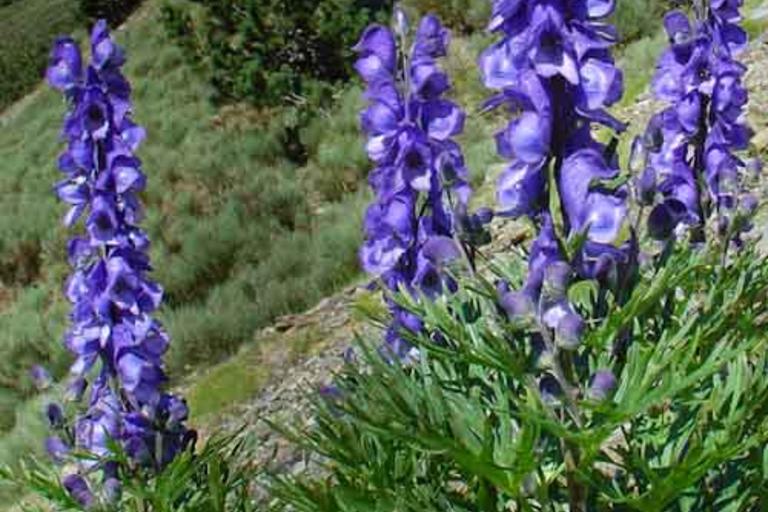
Introduction
| We are in Pla de la Vaquerissa, already overlooking the alpine meadows and summits of Dòrria, the Puigmal in front of the bottom and the Dou, to our right. |
| We see how scrubs escape from the black pine forest and invade subalpine pasture meadows. The dominant bush is the juniper (you have it by the side). |
| Among the juniper you will see a plant with split leaves and a sprig of beautiful blue flowers. It is the monk's-hood (foto), or poisonous grass. ATTENTION: The whole plant is VERY TOXIC, especially rhizomes (roots) and seeds. In case of ingestion of some part of the plant, death may occur after one or two hours later, as a result of arrhythmias or respiratory paralysis caused, sometimes, by pulmonary edema. The prognosis is very serious. The monk's-hood was already known in Asia more than 2,000 years ago, where it had been used as poison used with arrows and as a murder agent. In Europe, it had been used in executions in the Middle Ages. |
| It lives in the grassy and humid pastures, forming plains that the cattle do not eat. Aconitin is the active ingredient and has medicinal properties that only experts can use when they know exactly the content of this element. |
| The dominant shrub, the juniper, is the dwarf variety (50 cm) of the junipers we know in the average mountain (1-5 m) and grows in subalpine meadows. It is this low stinging plain with acicular leaves with a clear line. The astringent fruits are used to marinate meat or drought to make sauces. To eliminate gooseberries that invade pastures, it is enough to burn them, since it does not reappear. |
Images not available